We have noticed a steady increase in interest surrounding methods of digital restoration, as digitisation becomes a commonplace activity within the cultural heritage sector. Digital restoration involves using computer programs, like Adobe Photoshop, to edit and repair digital copies of a damaged object — which is usually a photographic print, artwork, or document.
Traditional conservation methods for restoring original objects are extremely time-consuming and expensive, and special care needs to be taken to make sure the items (which are often incredibly fragile) are not damaged even further.
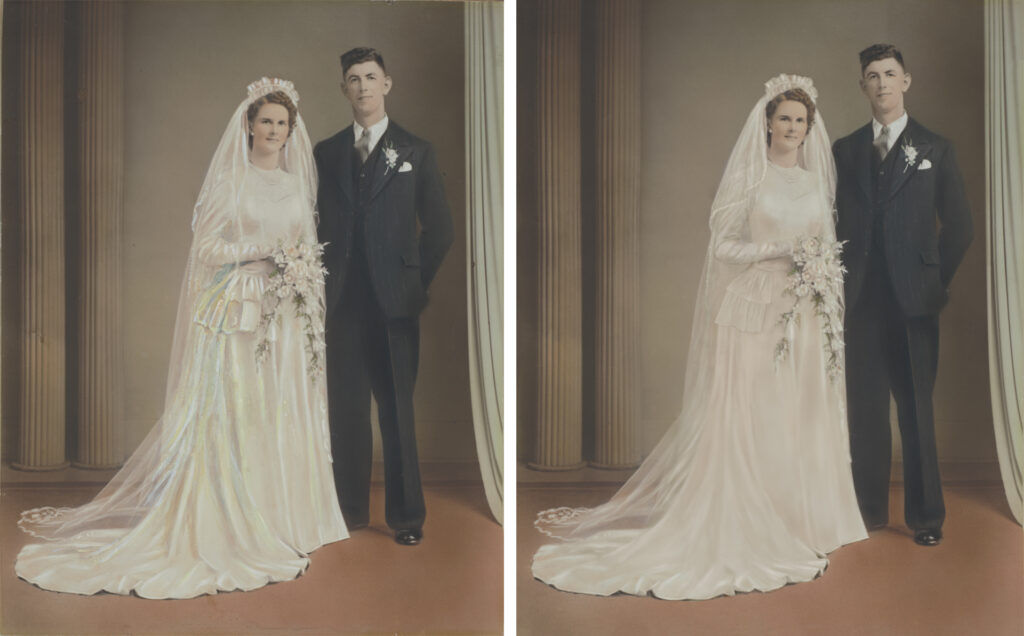
Our team recently had a customer seek out our digital restoration services for a large hand-coloured wedding portrait of her parents from 1950. Over the years some damage had been sustained to a small section in the middle of the photograph, distorting the bride’s dress.
The customer initially took the item to a conservator, who unfortunately caused even more damage: the conservator’s methods caused the photographic paper to disintegrate and in an attempt to remedy the damage the conservator painted (unrealistically) over their mistake.
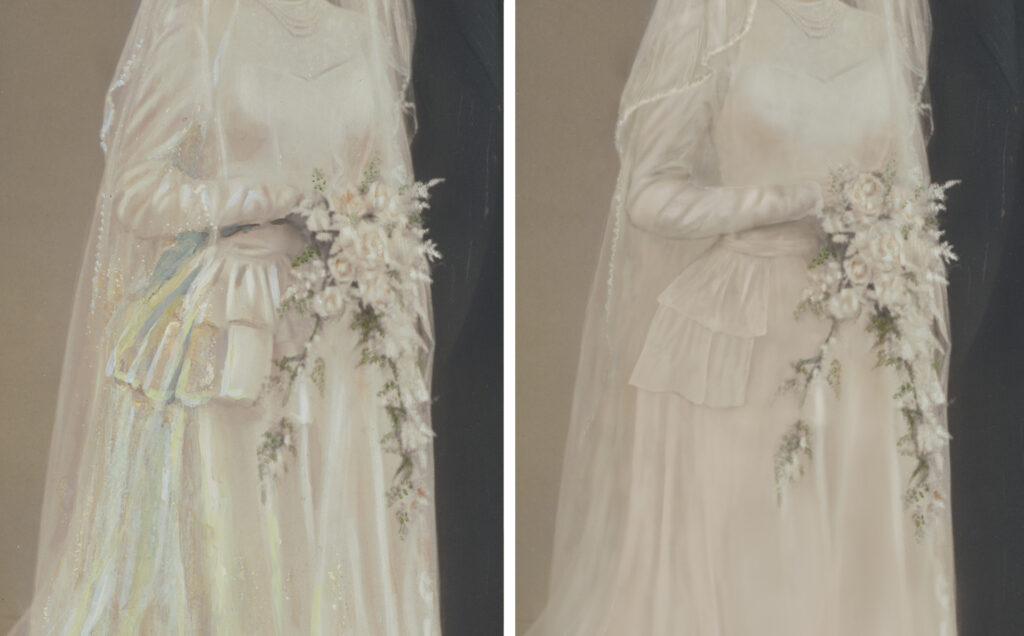
Luckily our team at NZMS could help! We began the digital restoration by digitising the original documents to a high resolution with our Phase One 100mp camera. This ensured the item was preserved in its current condition and we could capture as much detail as possible. Then one of our technicians began the painstaking task of digitally repairing the damage using Photoshop.
This process involves in-depth research, aiming to discover how the original item would have looked and make sure a truthful replica is produced. Thankfully the customer had some other photos of the wedding that we were able to use as a reference to digitally repaint the bride’s dress.
Once the customer was happy with our digital restoration work, we printed the photograph onto high quality matte paper to the exact same size as the original. This meant the restored version had a similar look and feel to the original, which was also produced on a matte finish paper. In the end our team was able to reproduce a photograph that is indistinguishable from the original — apart from the damaged section.
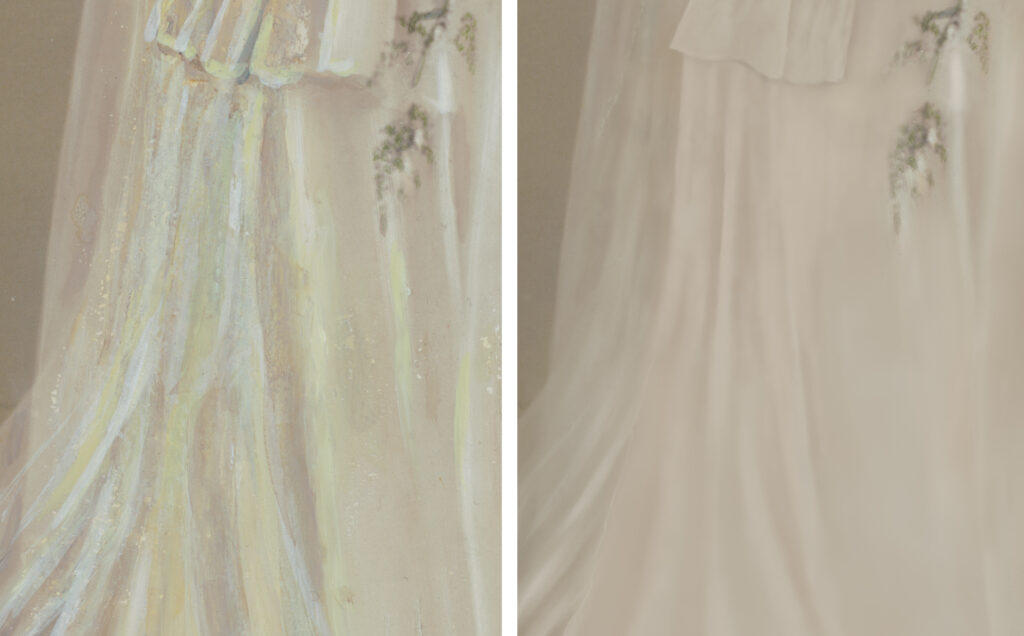
Another digital restoration technique that we can offer at NZMS is colouring black and white photographs. This is primarily a viable option for private individuals who might want to add some life to their old family photographs — we would not recommend colourising photographs from cultural heritage collections, such as those that might be found in a museum archive, because it risks damaging historical accuracy. There are not the same inherent risks with personal images, as choosing aspects such as what colours to use often comes down to the customer’s preference or memories.
Through most of the history of photography, if you had a black and white photograph and wanted to see it in colour, you had to add the pigment with a paintbrush. This not only altered the original item, but it also meant that mistakes were tricky to rectify. Digital methods have made colourisation a more accessible and much less destructive endeavour.
Some people believe that photographs that have only been recorded in black and white are in jeopardy of becoming antiquated — our contemporary world is full of bright, vibrant images, and colourisation can bring a new life to old photographs.
Colourist Marina Amaral explains that colourised photographs “help us to develop empathy and connect in a more intimate way with the subjects. We are instantly more open to hearing and understanding the stories behind the pictures”. Colourising black and white photographs allows the viewer to see them from a new perspective; for example, details can be lost in greyscale and illuminating those details with colour allows for them to be more easily appreciated.
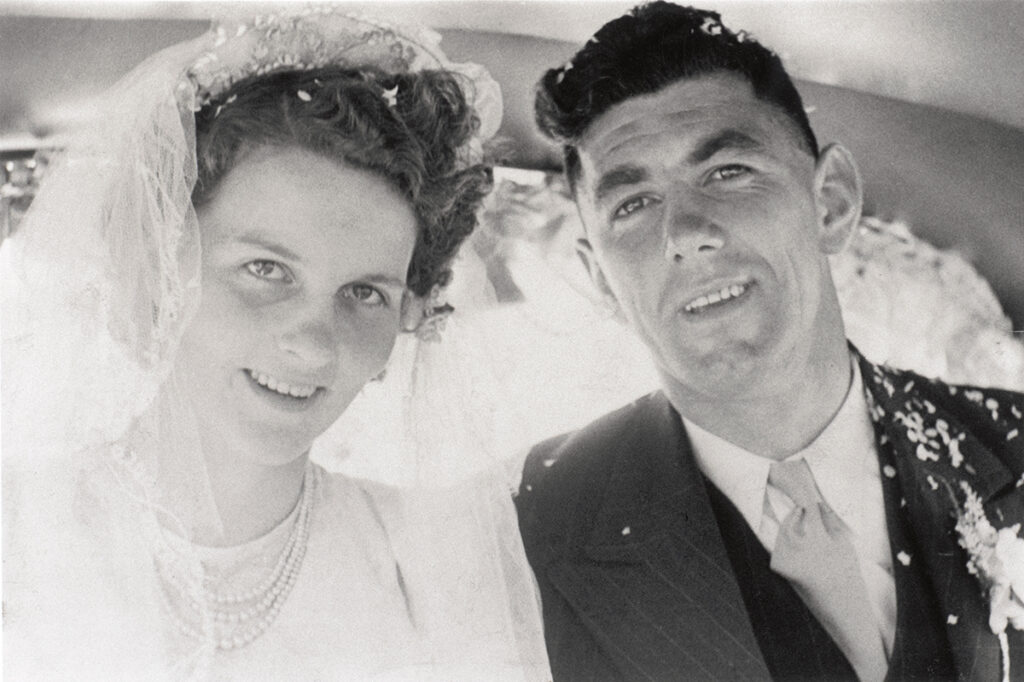
NZMS also colourised some wedding photographs for the same customer who brought in the damaged wedding portrait. Alongside suggestions from the customer, having access to the original colourised photograph depicting the same subjects helped us determine the appropriate colours for the photographs. One of our technicians then painted in the colours using Photoshop and a Wacom pen and tablet — paying particular attention to create realistic skin tones. The resulting photograph allows us to experience the scene just as those present would have seen it: in full, vibrant colour.
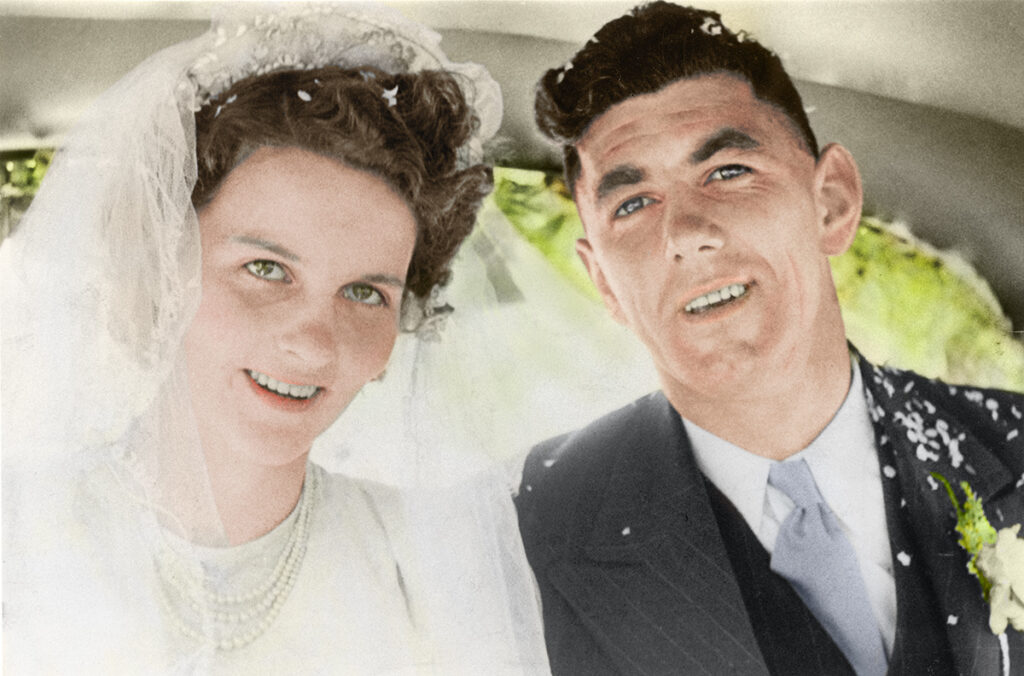
Contact NZMS today to learn more about our digital restoration services or to ask for a quote!
]]>